calsfoundation@cals.org
Willie Kavanaugh Hocker (1862–1944)
Willie Kavanaugh Hocker of Wabbaseka and Pine Bluff, both in Jefferson County, was a schoolteacher, poet, and active member of civic groups such as the Daughters of the American Revolution (DAR), the United Daughters of the Confederacy, and the Colonial Dames Society. She was also the designer of the Arkansas state flag, one of only two women in the United States who have had state flag designs adopted.
Willie Hocker was born on July 21, 1862, in Madison County, Kentucky. She was the youngest child of William K. and Virginia Brown Hocker, who moved their family to Arkansas in 1870, settling in Dudley Lake Township near Wabbaseka. Her father was a farmer/planter who, according to the Goodspeed history, had served with the Union’s Army of the Cumberland during the Civil War. Hocker was educated at schools in Pine Bluff and in Kentucky. She studied at the University of Virginia in Charlottesville and the University of Colorado at Boulder, obtaining a teaching certificate in 1887. She first worked in Jefferson County schools, and in 1895, she became the principal at First Ward School in Pine Bluff. Two years later, she returned to teach in the county schools near Wabbaseka. Throughout her thirty-four-year teaching career, she continually stressed Arkansas history. In addition to teaching, Hocker wrote short stories and poetry. Her best known poems are “Arkansas” and “Ozark Mountaineer.”
Hocker was a longtime member of the Pine Bluff chapter of the Daughters of the American Revolution, and it was through this organization that she came to design the Arkansas flag. In 1912, the Pine Bluff DAR decided to present the newly commissioned battleship USS Arkansas with an official state flag. Upon learning from the Arkansas secretary of state, Earle W. Hodges, that there was no state flag, the society members urged him to hold a contest for the design of one. A committee was appointed, and it asked for designs to be submitted for consideration. The designs were to bear no mark of identification but rather be accompanied by a typewritten explanation of the design as well as the name and address of the designer. Hocker’s design was “a rectangular field of red, on which is placed a large white diamond, bordered by a wide band of blue—national colors. Across the diamond is the word ‘Arkansas’”—placed there by request of the committee—“and the blue stars, one above, two below the word. On the blue band are placed twenty-five white stars.” The diamond signifies that Arkansas is the only state where diamonds are mined. The twenty-five white stars represent Arkansas’s place as the twenty-fifth state admitted to the Union. The three blue stars represent the three nations, France, Spain, and the United States, whose flags had flown over the state. The Arkansas General Assembly adopted this design as the official state flag in February 1913. The flag remained unchanged until 1923, when the legislature added a fourth star to the diamond to represent the Confederacy. At first, there were two stars above the name and two below, but legislation in 1924 positioned a Confederate star above the state’s name and the original three below it.
Hocker received honors and acclaim for the rest of her life for her design of the Arkansas state flag. In 1929, she represented Arkansas at the National Federation of Business and Professional Women’s Clubs’ Pageant of Famous Women of the United States. The Wabbaseka School Board named the new high school building for Hocker in 1938, despite the government’s reluctance to name buildings for living persons.
Hocker was a longtime member of Wabbaseka Methodist Church, at which she taught Sunday school. She wrote a brief history of the church in 1934 and lived directly behind the church.
Hocker died at her home in Wabbaseka on February 6, 1944. A historical marker was placed by the Wabbaseka United Methodist Church in June 2005 to honor her for her life as a teacher, churchwoman, and designer of the Arkansas state flag.
For additional information:
Hocker, Willie K. “A History of the Official Flag of Arkansas.” Arkansas Historical Association Publications 4. Conway, AR: Arkansas Historical Association, 1917.
Leslie, James W. Pine Bluff and Jefferson County, a Pictorial History. Norfolk, VA: The Donning Company, 1981.
Pine Bluff Commercial. September 26, 1978, p. 24.
Jane M. Hooker
Arkansas History Commission
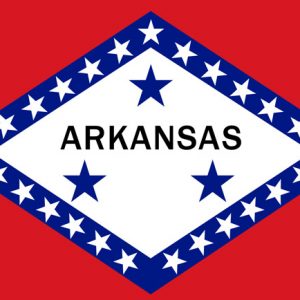 Arkansas State Flag, 1913
Arkansas State Flag, 1913  Arkansas State Flag, Original Design
Arkansas State Flag, Original Design 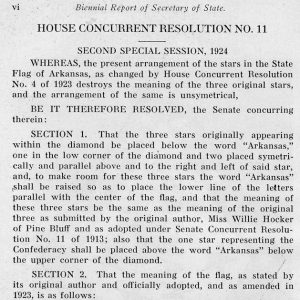 Flag Modification Resolution
Flag Modification Resolution  Hocker House
Hocker House 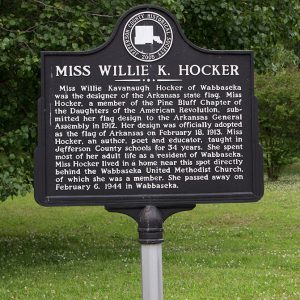 Hocker House Sign
Hocker House Sign 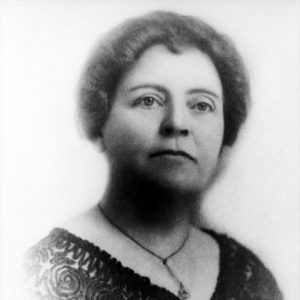 Willie Hocker
Willie Hocker 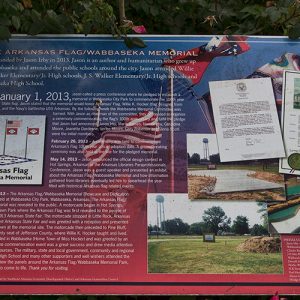 State Flag Plaque
State Flag Plaque 



Comments
No comments on this entry yet.